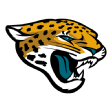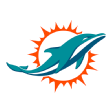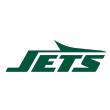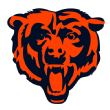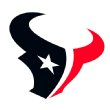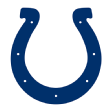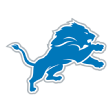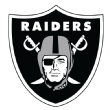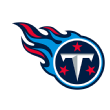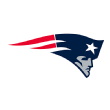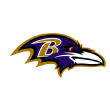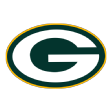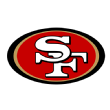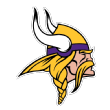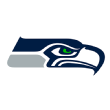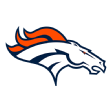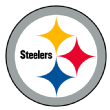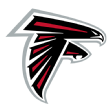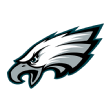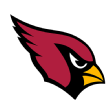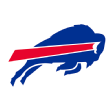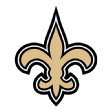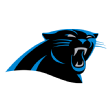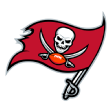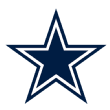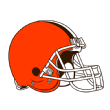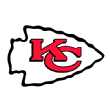Ranking offensive weapons for all 32 NFL teams in 2020: Barnwell picks the best and worst

The most important thing for an NFL team is to find a franchise quarterback. The second-most important thing might be surrounding that quarterback with weapons. The Ravens went shopping for the likes of Mark Ingram and Marquise Brown last offseason and helped Lamar Jackson emerge as MVP. The Chiefs have been at or near the top of these rankings for each of the past three years, and their weapons helped earn the team a Super Bowl victory and Patrick Mahomes a $500 million contract.
The Browns can tell you that weapons alone aren't enough to guarantee success, but every team wants to have pieces that can win a game with one big play. Let's rank each team's skill-position talent without including the impact of the quarterback, offensive line or scheme. I can't emphasize that caveat enough.
Imagine if every team's running backs, wide receivers and tight ends were dropped onto a new team with an average quarterback, average offensive line and average coaching staff. Which offense would be the most productive after you throw the likes of Deshaun Watson and Kyle Shanahan out the window? A few clarifications:
- Contract value doesn't matter. I'm strictly focusing on performance here, so while there are players on this list who might be considered bad values, the only thing that matters is what they do on the field.
- Only 2020 matters. Long-term value doesn't matter, so I'm strictly considering how each player is likely to perform in the 2020 season after accounting for his quarterback, line and coaching staff. The NFL can be a mystery, but I'm trying to use aging curves, recent history and the typical value produced by draft picks to estimate performance. I'm also factoring in injuries for players such asDeebo Samuel and injury histories for players such asWill Fuller V when estimating their availability.
- Wide receivers matter more than other positions. The league considers wide receivers more valuable than running backs or tight ends. The top 10 multiyear deals for wideouts are worth an average of $17.4 million per season. The top 10 running back deals average $9.3 million per year, while the top 10 tight ends are at $7.8 million per campaign. I don't weigh the value of wide receivers to be quite as significant as those numbers suggest, but a great wideout is worth more than a similarly effective running back or tight end.
- Top-level talent is worth more than depth. Since an NFL team will typically run out some combination of five running backs, wide receivers and tight ends on the vast majority of its offensive snaps, I focused on the five most valuable weapons. I handed out a bonus for players who would widely be considered among the best at their respective positions, includingTravis Kelce andMichael Thomas. When two teams were close, I broke ties by considering those teams with more depth at the skill positions, such as the Patriots, Eagles and 49ers.
- Not everyone who was considered gets mentioned. While I looked at the entire depth chart in evaluating each team's weapons, listing and writing about every single player in those groups would make this column longer than it already is. If I don't mention someone in a write-up, it's not because they were ignored or not considered.
The Jaguars were in the basement in these rankings last year. They're not 32nd again, although Jacksonville fans won't have to go too much further to find Gardner Minshew's weapons on this list:
Jump to a team:
ARI | ATL | BAL | BUF | CAR | CHI | CIN
CLE | DAL | DEN | DET | GB | HOU | IND
JAX | KC | LAC | LAR | LV | MIA | MIN
NE | NO | NYG | NYJ | PHI | PIT | SF
SEA | TB | TEN | WSH
32. Washington
2019 rank: No. 28 | 2018 rank: No. 18
It's rock-bottom for Washington, which has a budding star in No. 1 wideout Terry "F1" McLaurin and little else after the 24-year-old. McLaurin was second among rookies in receiving yards and yards per route run behind A.J. Brown, and his speed proved to be absolutely devastating, especially when stretching defenses out of the slot. He was a couple of long misses away from a 1,000-yard, nine-touchdown season.
After McLaurin, though, the weapons for second-year quarterback Dwayne Haskins are underwhelming. Washington has moved out disappointing additions like Josh Doctson and Paul Richardson, but the receivers who replaced them were Kelvin Harmon and Steven Sims, the latter of whom averaged just 9.1 yards per catch. Trey Quinn ranked No. 103 out of 111 wideouts in yards per route run. The organization is optimistic about Harmon and 6-foot-4 fourth-round pick Antonio Gandy-Golden, but over the past decade, less than 16% of fourth-round picks have topped 500 yards during their rookie season. And while it seemed like Washington would add tight ends to replace the departing Jordan Reed and Vernon Davis, those replacements were Logan Thomas and Richard Rodgers.
The running back depth chart looks like someone is dedicating a homage to your fantasy waiver wire of a year ago. Adrian Peterson and Peyton Barber are low-ceiling, run-only veterans who serve little purpose for a rebuilding organization. Derrius Guice and Bryce Love have serious injury histories and have combined for 95 pro snaps over their first three seasons. The big hope here is hybrid weapon Antonio Gibson, who is converting from serving as a wideout in college, but it would be a surprise if he's an impactful player from the jump. The bright side is that this is one of the youngest groups in the league.
31. Jacksonville Jaguars
Like Washington, the Jags have a quietly impressive young wideout (DJ Chark), a hybrid draft pick they're excited to integrate into the offense (Laviska Shenault) and ... not much else. While Chris Conley averaged 16.5 yards per reception last season, he also dropped six of his 89 targets. I wish they would give more time to Keelan Cole, who impressed as a rookie and has seen his playing time drop with each passing year. Also with each passing year, the Dede Westbrook breakout doesn't appear to be arriving. Tight end Josh Oliver, a third-round pick in 2019, is a theoretical breakout candidate given his athleticism, but injuries limited him to 117 snaps as a rookie, and the Jaguars used some of their limited cap space to sign Tyler Eifert, who was only able to average 10.1 yards per catch last season, his first full 16-game season.
I'm confused by Jacksonville's plan at running back, where it spent all offseason trying to foist off Leonard Fournette on any team that would take the former fourth overall pick, yet didn't bring in anybody to push or replace the 25-year-old. Fournette soaked up a ton of volume in 2019, but he was one of the league's least efficient runners and doesn't appear to be in the Jags' future plans. Despite this, the only backups for Fournette of note are Chris Thompson and 2019 fifth-rounder Ryquell Armstead. There's a significant gap between the two teams at the bottom of this list and the other 30 organizations.
30. Miami Dolphins
While the Dolphins made major strides in upgrading just about every other position on their roster this offseason, it was a surprise to see them mostly leave their weapons alone. The only additions they made were at running back, where they formed a new one-two punch with efficient veteran Jordan Howard and big-play option Matt Breida.
I'm not optimistic about either living up to expectations. Howard ranked in the top 10 in both DVOA and success rate in his lone season in Philadelphia, but that was behind one of the league's best offensive lines and out of line with what he did during his final two season in Chicago. He won't have that caliber of line in Miami. Breida's yards-per-carry figures belie middling success-rate marks, as he ranked 30th and 31st over the past two seasons. I'm also skeptical of undrafted backs moving out of Kyle Shanahan offenses, but Breida undeniably has home run ability and is likely to hit one or two this season.
I was surprised the Dolphins didn't make additions at receiver. DeVante Parker finally had his breakout campaign and was re-signed, but what happens if he's more like the guy we saw over his first four seasons? Preseason darling Preston Williams looks like an NFL contributor, but he had the league's 12th-worst catch rate before tearing his ACL in November. Veterans Allen Hurns and Albert Wilson haven't been healthy. While Miami will likely move starting tight end Mike Gesicki all around the formation, new offensive coordinator Chan Gailey's spread attack typically uses plenty of 10 and 11 personnel groupings. If Parker and Williams live up to expectations, the Dolphins could be in the market for another wide receiver next offseason. If they don't, one might not be enough.
29. New York Jets
After ranking last in 2017 and 2018, the additions of Le'Veon Bell and Jamison Crowder helped push the Jets toward the middle of the pack last offseason. Crowder lived up to expectations, but Bell was a disaster. Bell, who tried to make the argument in Pittsburgh that he was a transcendent offensive weapon, got behind a dismal offensive line in New York and looked like an ordinary running back, ranking 46th out of 47 backs in yards per carry (3.2) and last in first down rate (14.7%). His 7.0 yards per reception ranked 166th out of 173 receivers. Sheer chance would suggest Bell should produce more big plays in 2020, but he has one gain of 40 yards or more on 717 touches since the start of 2017. The Jets brought in Frank Gore and fourth-rounder La'Mical Perine to supplement their lead back.
Sam Darnold's receiving corps got a makeover, with Breshad Perriman coming in for Robby Anderson and second-round pick Denzel Mims moving in for Demaryius Thomas; in both cases, the Jets are swapping a higher floor for a higher ceiling. Quincy Enunwa's career might be over after suffering a neck injury. The big unknown is Chris Herndon, who only played 18 snaps after spending the offseason landing on breakout lists. His debut season in 2018 drew comparisons to future breakout contributors like Zach Ertz and Jordan Reed, but his statistical neighborhood also included guys like John Carlson, Tony Moeaki and Tim Wright, who all failed to top their rookie yardage total over the remainder of their careers.
28. Chicago Bears
Allen Robinson deserves better than this. Having spent his entire career catching passes from Blake Bortles and Mitchell Trubisky, he will get a comparative upgrade this season if the Bears start Nick Foles. The former Penn State star held up his end of the bargain a year ago, racking up 1,147 yards and seven touchdowns on 154 targets. Anthony Miller finished the season with 656 yards and averaged nearly 1.5 yards per route run, but drops and shoulder injuries have been a concern through his first two seasons, and the former second-rounder likely profiles best as a full-time slot receiver.
The other weapons on this roster all failed to live up to expectations, although much of that was due to injuries. (Tarik Cohen's seven drops on 103 targets are the exception.) Players like Cohen, Ted Ginn Jr. and Cordarrelle Patterson could be intriguing supplemental pieces in the right scheme, but it's difficult to count on coach Matt Nagy making the most of their ability. Free-agent signee Jimmy Graham's contract was universally panned, but even leaving the money aside, he was anonymous last season in a Packers offense desperate for a second receiving option and turns 34 in November. David Montgomery is the big hope for the Bears to climb up these rankings, but as a rookie, he was below-average by every running measure I could find.
27. Houston Texans
Replacing DeAndre Hopkins with Brandin Cooks and Randall Cobb will do that. The Texans are deep at wide receiver with those two joining Will Fuller V and Kenny Stills, but Fuller and Cooks have major injury concerns, while Cobb's bounce-back season in Dallas still included six drops on 84 targets. Houston was able to coax seven touchdowns on 34 targets out of tight end Darren Fells, but the 33-year-old has never shown that sort of red zone ability in years past, and history suggests that sort of touchdown rate has almost always proved to be a one-year fluke. Jordan Akins, a third-round pick in 2018, hasn't been able to consistently cash in on his athleticism, leaving this tight end room as one of the league's least inspiring.
The big name to look out for is the guy the Texans got in the Hopkins trade, but David Johnson is now three full seasons removed from his star turn in 2016 without a repeat performance. He has alternately been injured and ineffective over the past three seasons, and while I still harbor some hopes of a bounce-back, he wasn't even all that efficient of a runner during that 2016 season. The former Cardinals star is still a plus receiver, but you could also say that about Duke Johnson, which will make for a weird platoon. The Texans are deeper than most of the teams toward the bottom of this list, but there's nobody you can count on to stay healthy and play well for 16 games.
26. Indianapolis Colts
After a one-year rise up the charts, disappointing seasons from virtually every skill-position player drops the Colts back into the bottom quarter of the weapons rankings. Devin Funchess, T.Y. Hilton, Parris Campbell and Eric Ebron all got hurt and failed to live up to expectations. Hilton and Campbell return and are joined by Zach Pascal and rookie second-rounder Michael Pittman Jr. Indy can improve by subtracting replacement-level wideouts like Marcus Johnson and Chester Rogers from the rotation, although they could really use free-agent pickup Trey Burton to look more like the guy who was promising with the Eagles as part of their two-tight end sets alongside Jack Doyle.
The Colts' running back rotation also took a slight step backward, as Marlon Mack looks more like a Jordan Howard-type back than the guy who looked like he might become a rushing title contender after 2018. They drafted power back Jonathan Taylor in the second round, and he could replace Mack after 2020. It'll be the young guys -- Taylor, Pittman and Campbell -- who can help this team rise back up the list. If Taylor emerges quickly and the wideouts return to form with Philip Rivers at quarterback, this ranking could look pretty foolish.
25. Detroit Lions
Heading into last year, Lions fans were excited about a new big three of Kerryon Johnson, Kenny Golladay and T.J. Hockenson. One out of three ain't bad! Golladay averaged 18.3 yards per catch and scored 11 touchdowns, but Johnson missed half of the season with a knee injury and seemed to fall out of favor with the organization. Hockenson, the No. 8 overall pick in the 2019 draft, had 131 yards and a touchdown in the opener against a hapless Cardinals pass defense, but then only added 236 additional yards over the next 11 games before hitting injured reserve with ankle and shoulder injuries.
It's way too early to be concerned about Hockenson given how many great tight ends are ordinary in their debut seasons, but it was mostly a lost season. Johnson will be competing with second-rounder D'Andre Swift, with the Lions hoping at least one of them turns into a productive back. They'll also be hoping for a return to form from Marvin Jones, who has gone from averaging 18 yards per catch in 2017 all the way down to 12.6 last season. It would be easy to chalk that up to subpar quarterback play, but Jones averaged 12.7 yards per catch with Matthew Stafford at quarterback. There's plenty of talent on paper here, but the Lions need somebody besides Golladay to leap.
24. Las Vegas Raiders
The Raiders found a star receiver last season, but as everyone was looking toward a former Steelers star, their breakout player was former Ravens draftee Darren Waller. While touchdown randomness meant Waller finished with only three scores, the 27-year-old came out of nowhere for a 90-catch, 1,145-yard campaign. Fellow newcomer Josh Jacobs, one of three of the team's first-round picks in 2019, also produced a 1,150-yard season, meaning the Raiders were the only team in the league to have a running back and tight end both top 1,000 yards from scrimmage.
Vegas is 24th because of what lies between those two groups. Wideout was a mess, with Antonio Brown forcing his way off the team and Tyrell Williams failing to live up to expectations thanks to a toe injury. (It should be noted that Williams' season was almost a carbon copy of his final year with the Chargers.) Fifth-round pick Hunter Renfrow unsurprisingly emerged as a slot option, but the Raiders will be counting on rookies Henry Ruggs III and Bryan Edwards to push for starting roles immediately.
23. Cincinnati Bengals
If we could pencil in 16 games from A.J. Green for first overall pick Joe Burrow, the Bengals would be further up these rankings. Of course, Green has played just nine games since the start of 2018 while dealing with groin, toe and ankle injuries. Unless he inks an extension before Wednesday's deadline or signs his franchise tag, it's unclear whether the star wideout will ever play another game for the Bengals.
The Bengals still have a group of wideouts with upside in rookie Tee Higgins, slot receiver Tyler Boyd and frustrating former first-rounder John Ross III, who averaged 1.98 yards per route run while simultaneously dropping four of his 56 targets. Tight end isn't very exciting, but the Bengals do have Joe Mixon, who Bill Belichick called "probably [the] best back in the league" in December. I'm not quite on board with that level of praise, but Mixon has been pretty good over the past two seasons despite playing behind one of the league's worst offensive lines. If the line improves in 2020, Mixon could challenge for the rushing title.
22. Tennessee Titans
The Titans might have landed on an absolute superstar in A.J. Brown. The second-rounder averaged more than 20 yards per reception last season, while his 2.92 yards per route run were second among wideouts, behind only Michael Thomas. Brown posted one of the best YAC rates of the past decade, and while that's likely to regress, he looks like he's going to be a great player. If 2017 fifth overall pick Corey Davis were to take a step forward after three relatively anonymous campaigns, the Titans could have one of the best young wideout groups in football. They'll also hope for more out of Adam Humphries after a disappointing debut campaign in Tennessee.
Offensive coordinator Arthur Smith can also boast of last year's rushing leader in Derrick Henry, although his impact as a receiver mostly consisted of one 75-yard touchdown on a screen. With Dion Lewis leaving and Henry playing on the franchise tag, I wonder if the Titans decide to go all-in and use Henry as a three-down back with an Ezekiel Elliott-type workload. On the other hand, this offense would be a mess if Henry got injured, which means I was surprised that the Titans didn't add another power back this offseason. I also thought they could pursue a tight end, but they'll turn things over to the combination of Jonnu Smith and Anthony Firkser after moving on from Delanie Walker. This is a top-heavy group.
21. New England Patriots
I'm quietly optimistic about the Patriots' weapons, especially if you're comparing them to what you saw at the end of 2019, when Julian Edelman and Mohamed Sanu were both compromised by injuries. Sanu tried to play through a high ankle sprain, while Edelman was battling knee and shoulder injuries, both of which required surgery after the season. They are each now on the wrong side of 30, so they might be past their peak, but they can be effective wideouts. If N'Keal Harry takes a step forward in Year 2, this could be a valuable three-wideout grouping.
The tight end room is also better, although that wouldn't have been very difficult to accomplish. I'm skeptical of any rookie tight end making a difference, but Devin Asiasi and Dalton Keene should be improvements on Matt LaCosse and Ryan Izzo. The Pats also will roll out their unusually deep group of running backs for another season, although expected lead back Sony Michel was a disappointment and lost Bill Belichick's confidence as a receiver and goal-line back at times. Michel dropped three of his 20 targets; the only players in the league with more than 20 targets who had a higher drop rate were Chase Edmonds and Kalen Ballage.
20. Baltimore Ravens
The Ravens finished 2019 as the league's best offense by DVOA, of course, but so much of the credit for that success has to go to the offensive line and league MVP Lamar Jackson, who aren't a part of this discussion. Jackson makes life easier for his running backs, and that led to Mark Ingram averaging 5.0 yards per carry and leading all backs in success rate. Gus Edwards was sixth. And the Ravens added to their collection of riches in the backfield by drafting J.K. Dobbins in the second round.
Jackson was an efficient passer, but I'm not sure how much of that was due to great work from his receivers. Tight end Mark Andrews took a leap forward and averaged a whopping 3.17 yards per route run last season, but there was no consistent production at wide receiver. Rookie first-rounder Marquise Brown racked up 233 yards and two touchdowns across the first two weeks of the regular season and then produced 351 receiving yards over the remainder of the season, with an ankle issue costing him both games and effectiveness. He then finished with a 126-yard performance against the Titans in a game in which Jackson threw 59 passes. With all due respect to pieces such asMiles Boykin, Willie Snead and Devin Duvernay, a breakout from Brown is the most likely path for the Ravens to impress further in 2020.
19. Green Bay Packers
The Packers can argue that they have two of the best players in the league at their respective positions in Davante Adams and Aaron Jones. After that ... there's mostly hope. I'm optimistic that Devin Funchess can be a more productive second or third wideout than most think, but he also missed almost all of last season with a collarbone injury and was dealing with a back ailment during his final year in Carolina. Allen Lazard inspires more optimism after he averaged 1.72 yards per route run in his first significant pro campaign. Jimmy Graham wasn't a huge loss at tight end, but Green Bay only replaced him with third-round pick Josiah Deguara. The Packers will now hope that Jace Sternberger, a third-rounder last year, will step up after making his first NFL catches last postseason.
Jones' future with the team is murky after the Packers used a second-round pick on AJ Dillon, but his importance is clear. Aaron Rodgers' QBR more than doubled with Jones on the field last year, going from 32.4 without his star running back to 68.7 with Jones in the backfield. Coach Matt LaFleur & Co. have insisted on rotating Jones with Jamaal Williams when both are healthy; they would rate higher in these rankings if we could trust them to use Jones 90% of the time.
18. San Francisco 49ers
If these rankings were focused more on depth than top-tier talent, the 49ers would rank close to the top of the charts. San Francisco is deep at running back and wide receiver, even after trading Matt Breida and Marquise Goodwin in April. The Niners have one unquestioned star in tight end George Kittle, who is the best all-around player at the position in the league, although I'd argue that Travis Kelce is more impactful as a pure receiver. At the same time, nobody who ran more than 200 routes in 2019 averaged more than Kittle's 3.3 yards per route run.
Outside of Kittle, though, they are more about threatening you with consistent speed and YAC than any one particular target. Deebo Samuel could be that guy in the long term, but the Jones fracture he suffered in June is likely to limit his effectiveness in 2020. Untested players like first-round pick Brandon Aiyuk and 2019 second-rounder Jalen Hurd hold plenty of promise, but we haven't seen either of them take an NFL snap. Guys like Dante Pettis, Trent Taylor and Travis Benjamin are better than most teams' fourth and fifth wideouts, but it's unclear whether any or all of them will make the roster.
History tells us that just about anybody can succeed at halfback in the Kyle Shanahan offense, with Devonta Freeman as the latest example of a back who excelled under the 49ers coach in Atlanta before disappointing after Shanahan departed. Raheem Mostert led the league in rushing DVOA and still haunts the Packers after his postseason performance, but it's telling that Shanahan has only been willing to use Mostert as a true No. 1 back when Tevin Coleman has been unavailable. Mostert also requested a trade last week, leaving his future with the team uncertain.
17. Minnesota Vikings
Minnesota broke up over the offseason what might have been the league's best one-two punch at wide receiver by trading Stefon Diggs to the Bills. LSU star Justin Jefferson, a first-round pick, will replace Diggs, but it's asking a lot of any rookie to step in for one of the most productive wideouts in football. The trade could also lead the Vikings to move toward more 22 personnel on offense, which would create playing time for second-year breakout candidate Irv Smith Jr. at tight end.
Adam Thielen is still around, of course, but a hamstring injury broke his streak of increasing his receiving yardage after five consecutive seasons. This offense would be in serious distress if Thielen struggled to stay healthy again in 2020, given that the starting wideouts would become Jefferson and Bisi Johnson. Kyle Rudolph's production also fell last season, with the longtime Vikings tight end averaging his fewest receiving yards per game (22.8) since 2011.
The breakout star of the offense in 2019 was unquestionably Dalvin Cook. I'm not concerned about Cook's threat to hold out, since it should be a nonstarter under the new collective bargaining agreement. If he holds out of camp, he would lose an accrued year toward free agency, which would cost him millions. I'm more concerned about his ability to stay healthy after missing 19 games over his first three seasons, with a mysterious shoulder injury costing him two games and limiting him in three others down the stretch in December. Cook averaged 5.3 yards per carry over the first half of the season and then failed to top 3.8 yards per carry in any one game from there on out. He looked great in the Gary Kubiak/Mike Shanahan running game, but I wonder if he can handle a 250-carry workload and stay healthy in the process.
16. Los Angeles Chargers
Melvin Gordon's disastrous holdout and subsequent campaign opened up the door for Austin Ekeler, who averaged 122.5 yards from scrimmage over the first month of the season and earned an extension afterward. Ekeler was below-average as a runner as his workload increased and will need help from either Joshua Kelley or Justin Jackson between the tackles, but he was third in the NFL in yards per route run and fourth in targets per route run. He's a valuable weapon.
Wide receiver Keenan Allen basically posted an identical line in 2018 and 2019, but Mike Williams suffered the indignity of touchdown regression past the mean. After scoring 10 times on just 43 receptions in 2018, he scored twice on 49 catches last season. Williams led the league by averaging 20.4 yards per grab, but while he jumped from 664 yards to 1,001 yards in his third season, he needed 24 more targets to get there. I'm not factoring quarterback play into this analysis, but it's likely his numbers will drop in 2020 with the Chargers drafting Justin Herbert to replace Philip Rivers.
The guy who could push the Chargers up the rankings is Hunter Henry, who came back from a torn ACL, only to break a bone in his leg in the opener and miss a month. Henry was on the field for the final 11 games of the season and popped up with a 100-yard performance, but even over that time frame, he ranked eighth among tight ends in yards per game. Rob Gronkowski showed you can be really valuable despite injury woes if you're great when healthy. I'm not sure pretty good and occasionally healthy is as compelling. Henry has a lot to play for on the franchise tag this upcoming season.
15. Seattle Seahawks
I get a lot of things wrong every year, but if I had to pick the thing I was most wrong about in 2019 with regard to this column, I'd choose DK Metcalf. The 6-foot-4 wideout was an immediate weapon as a rookie, finishing the regular season with 900 receiving yards and seven touchdowns, before adding 219 more receiving yards in the postseason. Metcalf and Tyler Lockett were immediately one of the best one-two wide receiver punches in the league. While we've seen big wideouts such asMichael Clayton and Kelvin Benjamin impress as rookies before struggling to live up to those expectations, I'm not doubting Metcalf after 2019.
The rest of the Seahawks' arsenal isn't quite as imposing. Russell Wilson makes all tight ends look good and could give 35-year-old Greg Olsen a bump, but the longtime Panthers star hasn't been his old, consistent self since 2016. Chris Carson finished third in success rate and would be a super-efficient runner if it weren't for his crippling fumble problem. He fumbled seven times last season, a number only one player (Adrian Peterson) has matched in a single season over the past decade. Rashaad Penny, a first-rounder in 2018, might not be ready to start the season after tearing an ACL, although the Seahawks were able to add a veteran backup for Carson in Carlos Hyde. If Carson solves his fumbling woes and Metcalf takes another step forward, Seattle could approach the top 10 next year.
14. Denver Broncos
After using the past two drafts to rebuild their weaponry, the Broncos have one of the more exciting young cores in the league. Wide receiverCourtland Sutton, a second-round pick in 2018, broke out with a 1,112-yard campaign last season, which is particularly impressive when you consider that his quarterbacks were Joe Flacco, Brandon Allen and rookie Drew Lock. First-round pick Noah Fant wasn't consistent as a rookie, but he ranked ninth in receiving yards and fourth in yards per route run among tight ends over the second half of the season. General manager John Elway then supplemented this group by using his top two draft picks on wide receivers Jerry Jeudy and KJ Hamler. This is an exciting group of receivers, although more for the long term than in 2020 given their relative inexperience.
I'm less enthused about the Broncos moving Phillip Lindsay out of the starting lineup for free-agent signing Melvin Gordon, who wasn't effective for the Chargers last season after returning from his holdout and saw the fumble woes from his rookie year reappear. Gordon was still 15th in success rate and is a plus receiver, so he should comfortably be an upgrade on Royce Freeman's half of the Denver running back rotation.
13. Pittsburgh Steelers
It was almost entirely a lost season in 2019 for the Steelers' weapons, who had to endure a year with replacement-level quarterback play after Ben Roethlisberger was done for the year in Week 2. Even if Roethlisberger had stayed healthy, though, key weapons such asJames Conner and JuJu Smith-Schuster had their own injury woes. Both players are bounce-back candidates in 2020, when the 2017 draftees will each be in a contract year.
The one skill-position player who did make it through all 16 games for the Steelers was Diontae Johnson, who racked up 680 yards and five scores as a rookie. His fumble rate was unconscionable, as he coughed up the ball five times on 83 touches. If Johnson can hold onto the football, he can form a useful trio with Smith-Schuster and James Washington, who averaged 1.84 yards per route run a year ago. I'm also optimistic about Eric Ebron's chances of making an impact at tight end alongside Vance McDonald. Pittsburgh will need Roethlisberger to stay healthy to put up big numbers, but this is a young, talented core of weapons.
12. Atlanta Falcons
The Falcons are in transition as they try to shift badly needed resources from their offense to their defense. They've downgraded by dropping from Mohamed Sanu and Austin Hooper to Russell Gage and Hayden Hurst, although I'm optimistic about 2018 first-round pick Hurst's chances of repeating Hooper's production with the expanded role. Running back Todd Gurley is likely an upgrade on the oft-injured Devonta Freeman and will certainly be better as a receiver. Gurley has a high ceiling thanks to this offensive line and a low floor as a result of his knee condition; he could be an Offensive Player of the Year candidate or he could sputter through five games and miss the rest of the year.
The Falcons have their core at wide receiver with Julio Jones and Calvin Ridley, although Jones' production dropped slightly from a league-high 104.8 receiving yards per game in 2018 to 92.9 yards per contest last season. Ridley's season-long numbers and snap rate were virtually identical, but he went from playing 16 games to 13. Prorated to 16 games, Ridley would have posted a 78-1,065-9 line, and while you can't count on perfect health, he should be able to top those marks without Hooper in the fold.
11. Los Angeles Rams
The dream fell apart for the Rams, who responded to a frustrating season by doing something that would have been unimaginable two years ago: trading away Brandin Cooks and cutting Todd Gurley. They replaced the duo by using second-round picks on Cam Akers and Van Jefferson. Sean McVay desperately needs Akers or 2019 third-rounder Darrell Henderson to step up as an every-down back given how ordinary Malcolm Brown has been for most of his career.
The big three at wide receiver is now a big two with Cooper Kupp and Robert Woods, but Los Angeles still has three devastating receiving weapons when you add tight end Tyler Higbee to the mix. Over the last five weeks of 2019, Higbee led all receivers -- not tight ends, but all pass-catchers -- in receiving yards (522). That number probably isn't sustainable with Gerald Everett back in the mix, given that the other Rams tight end played just four snaps over that five-game stretch, but if Higbee is a top-end TE1, this team might not miss Cooks.
10. Philadelphia Eagles
On paper, the Eagles should be higher. At wide receiver, they can utilize two talented veterans (DeSean Jackson and Alshon Jeffery), two highly drafted young players (JJ Arcega-Whiteside and Jalen Reagor) and two speed demons (Marquise Goodwin and John Hightower). When you throw in Zach Ertz and Dallas Goedert at tight end, this should be one of the best receiving corps in the league.
Of course, that group has flaws. Jackson missed most of 2019 with a core injury, and his future with the team is uncertain after he posted anti-Semitic messages on social media. Jeffery suffered a Lisfranc injury in December, and he has no timetable for return. Arcega-Whiteside was a disaster as a rookie, averaging just 0.58 yards per route run while dealing with injuries and making mental mistakes. Goodwin has missed 12 games over the past two season with various injuries and personal absences. Reagor and Hightower are rookies. Chances are that one or two of these guys will turn out to be productive players, but there's also a realistic chance that Philadelphia is frustrated by its wide receivers again in 2020.
The workload at running back will fall on Miles Sanders and Boston Scott, although it still seems likely that the Eagles will add at least one veteran back before the start of the regular season. Sanders narrowly topped 800 rushing yards and 500 receiving yards as a rookie. The list of backs to hit the 500-500 club as a rookie since the 1970 merger is pretty impressive: Sanders, Saquon Barkley, Alvin Kamara, Gio Bernard, Reggie Bush, Edgerrin James, Marshall Faulk, Herschel Walker, Earl Cooper and Billy Sims.
9. Arizona Cardinals
The Cardinals have made significant additions to their weapons core via trade. Last season, they traded for Kenyan Drake, who racked up 814 yards from scrimmage and eight touchdowns after being given a reprieve from the tanking Dolphins. Arizona followed up this offseason by stealing DeAndre Hopkins from the Texans in the David Johnson trade, which might have qualified as further addition by subtraction. With Larry Fitzgerald and Christian Kirk both returning, the Cardinals could easily justify a higher position in the top 10.
I'm more pessimistic than those names might indicate. Fitzgerald's numbers have dropped dramatically since his last Pro Bowl appearance in 2017; he is a franchise icon, but his ceiling seems to be a lot lower than we might remember. Drake's performance over the second half was out of line with his career production and was extremely inconsistent. He scored six touchdowns on eight carries inside the 5-yard line with the Cardinals, when the league-average rate is 45%. Drake also had scored just once on five such touches during his time with the Dolphins. He can be productive in this offense, but I'm not sure I expect the sort of yardage or touchdown pace we saw from him over the second half of 2019 in 2020.
I want to see more growth and consistency out of Arizona's younger receivers. Nearly 36% of Kirk's 709 receiving yards and all three of his touchdowns came in two games. Andy Isabella, a second-round pick last year, had 166 receiving yards across back-to-back games in midseason and just 23 yards otherwise, while fourth-rounder Hakeem Butler was a disappointment in camp before missing the entire season on injured reserve. There are a lot of mouths to feed in this offense, but it would hit another level if Kirk can push ahead of Fitzgerald.
8. Buffalo Bills
The Bills built an entirely new core of weapons for Josh Allen last year, and in many cases, they landed on hits. John Brown played like a legitimate No. 1 wideout, averaging 2.15 yards per route run. Cole Beasley wasn't far behind. Tyler Kroft didn't stay healthy, but Dawson Knox emerged as a matchup problem (albeit with drop issues) as a rookie and didn't give the job back. Devin Singletary helped lead a comeback in the opener, averaged 5.1 yards per carry, finished 13th in DVOA and was versatile enough to take over as an every-down back by Week 16, but he fumbled four times on 180 touches.
Now, of course, the Bills have added a superstar wide receiver to that lineup in Stefon Diggs, who ranked third in yards per route run among wide receivers last season. The only guy who averaged more yards when targeted was A.J. Brown. Diggs adds a dominant weapon to the lineup and pushes everybody else down a spot. The 2019 version of John Brown could be the most overqualified second wideout in football outside of Chris Godwin. If the second-year guys such as Singletary and Knox make strides in holding onto the football, the Bills could be a top-5 unit in 2021.
7. New York Giants
If everyone could just get on the field at one time, the Giants would be something to stress out about for opposing defenses. Daniel Jones wasn't able to get his five key weapons -- Saquon Barkley, Evan Engram, Golden Tate, Sterling Shepard and Darius Slayton -- on the gridiron together for a single snap in 2019. Jones dropped back 77 times with only Shepard missing from that bunch and posted a passer rating of 100.7, 13 points higher than his season-long total.
Slayton was the revelation of the bunch, leading the team with 740 receiving yards and eight touchdowns as a rookie fifth-round pick. The Giants don't have anybody as valuable as DeAndre Hopkins, but they are deeper one through five than the vast majority of teams and still have position-leading upside at running back and tight end with Barkley and Engram. If they just could stay healthy ...
6. New Orleans Saints
While NFL executives named Julio Jones the league's best wide receiver, Michael Thomas is comfortably the most productive wideout by the majority of measures. The only argument you could have made against Thomas was the idea that he wouldn't be the same quarterback without Drew Brees at the helm, but across Teddy Bridgewater's five starts, he actually averaged more receiving yards per game (110.2) and yards per target (10.6) than he did otherwise (106.7 and 8.8, respectively.) We've never seen a player absorb as much volume and threaten teams downfield as frequently as Thomas while simultaneously catching more than 80% of the passes in his direction.
The Saints found a second weapon behind Thomas in Jared Cook, who set career highs in yards per catch (16.4) and touchdowns (nine). Cook didn't absorb a ton of volume, and I wonder if there will be enough in the way of opportunities for another big-name addition in Emmanuel Sanders. I'm more pessimistic about Sanders than the market, owing to his age (33), recent injury history and inconsistent production with the 49ers; but as long as Sanders can win his one-on-one matchups for three or four catches a week, he'll be fine.
The only disappointing weapon for the Saints last season was Alvin Kamara, who suffered from some severe touchdown regression past the mean. After he scored once every 15.4 touches between 2017 and 2018, the dynamic running back scored once every 42 touches last season. His receiving efficiency also dropped off, and he fumbled four times after fumbling just once in each of the prior two campaigns. I'm optimistic about Kamara bouncing back in 2020, but asking for the unreal touchdown rate of his first two seasons is probably too much.
5. Carolina Panthers
It's hard for a running back to be more productive than Christian McCaffrey, who finished with the third-most yards from scrimmage (2,392) in NFL history. McCaffrey scored 19 touchdowns, was efficient as a runner and receiver, absorbed huge volume and only fumbled once on 403 touches. The only hole I can poke in his production is that much of it came with the Panthers trailing; he (453 receiving yards) and teammate DJ Moore (421) ranked Nos. 1 and 2 in receiving yards when their team's chance of winning was below 10%. It's difficult to imagine McCaffrey being quite as productive in 2020, but even 80% of his 2019 season would make him one of the NFL's best backs.
Everybody knows McCaffrey is a star, but even given those numbers above, I'm not sure people are appropriately valuing Moore. The 2018 first-rounder finished with 1,175 receiving yards despite catching passes from Kyle Allen and a compromised Cam Newton. Moore could be a top-10 receiver with better quarterback play from Teddy Bridgewater this season. I'm not quite as optimistic about Curtis Samuel, who averaged less than 6.0 yards per target a year ago, but new addition Robby Anderson also should benefit from an improved passer. The biggest question is Ian Thomas, who impressed at the end of 2018 and will have the first shot at taking over for Greg Olsen at tight end.
4. Tampa Bay Buccaneers
While a drop in possessions is likely to drag down their cumulative numbers, the Bucs have a strong case for sporting the NFL's best receiving corps. They have the best one-two punch at wide receiver in the game with Mike Evans and Chris Godwin--who solved his fumble problems and emerged as a great second option. The only downside is that Tampa Bay didn't really replace third wideout Breshad Perriman, who was one of the league's most productive wideouts in December after Evans and Godwin went down injured.
No team is deeper at tight end with O.J. Howard, Cameron Brate and now Rob Gronkowski. Even if we only see the guy whose numbers declined in 2018, Gronk posted a 47-682-3 line and finished 11th among tight ends in fantasy football. With a year to rest his ailing back, he has more red zone upside than that line would suggest.
As was the case a year ago, though, the Buccaneers have the worst group of running backs in football. Ronald Jones improved after a dismal rookie campaign, but his issues with fumbles and pass protection make it difficult to expect Bruce Arians to give the 2018 second-rounder significant volume. The only players of note behind Jones are rookie third-rounder Ke'Shawn Vaughn and Dare Ogunbowale. This is a team crying out for a veteran back such asDevonta Freeman, Lamar Miller or LeSean McCoy.
3. Dallas Cowboys
How do you go from 30th to third over the course of two seasons? Invest. The Cowboys traded a first-round pick for Amari Cooper, and while the move was widely panned at the time, he ranks fifth in receiving yards and is tied for a league-high 14 receiving touchdowns since he joined up with Dak Prescott& Co in 2018. Michael Gallup was a third-round pick awaiting his pro debut at the start of 2018, but he has emerged as a star after an 1,107-yard campaign. The only third-round pick to produce more yards in his second season as a pro is Mike Wallace, with Gallup coming in ahead of guys such asT.Y. Hilton, Kenny Golladayand Terrell Owens. Dallas just added to the fold Oklahoma dynamo CeeDee Lamb, who would profile as the No. 1 wideout for a handful of teams right now. He is Dallas' No. 3.
Jerry Jones' team also has Ezekiel Elliott, who has led the league in rushing yards per game in three of his first four NFL seasons. The only reason the Cowboys are third is the prospects of their tight end group, for whichBlake Jarwin will assume a larger role after Jason Witten left for Las Vegas. Jarwin was productive in a small sample last season, ranking eighth in the league in yards per route run and 11th in yards per target. There's no way he is going to see significant volume with the other four guys in this offense ahead of him, but if Jarwin can maintain that sort of efficiency, Dallas won't have any weaknesses.
2. Cleveland Browns
The Browns are back toward the top of these rankings for a second consecutive season. There are fair questions about whether their offense will be effective after a disastrous 2019 campaign, but their weapons aren't the problem. In some places, they're better than they looked a year ago. Free-agent signingAustin Hooper's production was inflated by garbage-time numbers in Atlanta, but he is still a significant upgrade on David Njoku.
Nick Chubb kept up his second-half performance from 2018 over a full season in 2019, and while he needs to be more efficient, the idea of Chubb playing in a Gary Kubiak-style rushing attack under Kevin Stefanski in 2020 is scary for opponents. Kareem Hunt was productive in a limited role after returning from suspension, ranking in the top 15 in both yards per target and yards per route run. Baker Mayfield's numbers improved with Hunt on the field, and Hunt is overqualified for his role as the bottom half of a back rotation.
In what would have been a surprise given what we thought last season, my concern about the Browns is mostly with the wide receivers. Jarvis Landry underwent hip surgery in February, and it's unclear whether he'll be ready to go in training camp. Odell Beckham Jr. played through a hernia in 2019, and there's a good chance he bounces back in 2020. But it's also fair to note that we're now three years removed from the OBJ who was one of the league's best wideouts with the Giants. Beckham averaged 95.9 receiving yards per game over his first three seasons, with that number falling to 74.7 yards over the past three campaigns. If he is the guy from Years 1 to 3, the Browns should be No. 1 here. If Beckham has another season in which he fails to live up to that level of play, we probably need to reevaluate our expectations for one of the league's most talented receivers.
1. Kansas City Chiefs
I'm confident Patrick Mahomes would have been a successful NFL quarterback regardless of where he landed, but it's not selling the superstar passer short to point out that he has had plenty of help. In addition to the coaching of Andy Reid, just look at those weapons rankings. The Chiefs surrounded Mahomes with talent before he took over as the full-time starter, and they have reaped the benefits.
The Chiefs rank first for the second time in three years because they're so deep with receiving options. Travis Kelce is the NFL's most productive receiving tight end. Over his three seasons as a starter, Tyreek Hill is sixth in receiving yards and fourth in yards per route run among wide receivers. Sammy Watkins might not live up to the contract he signed or the expectations he had when he was drafted No. 4 overall in 2014, but he racked up 288 receiving yards when the Chiefs needed him in the playoffs, the second-highest total of the postseason. Mecole Hardman quietly averaged 1.90 yards per route run; he only caught 26 passes, but nearly 35% of them went for 20 or more yards, which was the fifth-highest rate in the league. Every one of these guys is a threat to score from anywhere on the field.
You need to catch passes if you're going to play running back for Reid, and the Chiefs now have two backs who can do that. Damien Williams has generally been productive when healthy. He has had 15 games as Kansas City's primary back over the past two seasons, and in those contests, he has carried the ball 205 times for 1,006 yards (4.9 yards per carry), caught 61 passes for 498 additional yards and scored 19 touchdowns. That's basically Aaron Jones' 2019 regular season, and a significant chunk of Williams' work has come in the postseason.
What put the Chiefs over the top, though, is the addition of first-round pickClyde Edwards-Helaire. The major drop-off when the Chiefs cutKareem Huntand replaced him with Williams came in the receiving game. Only two backs in the nation averaged more yards per route run last season than the LSU star Edwards-Helaire, who is perfectly capable of splitting out as a receiver and winning matchups at the line of scrimmage. He is likely going to be an insurance policy against Williams' health and a valuable weapon in his own right from Day 1. It's just enough to push the Chiefs ahead of the Browns and Cowboys for the top spot.




